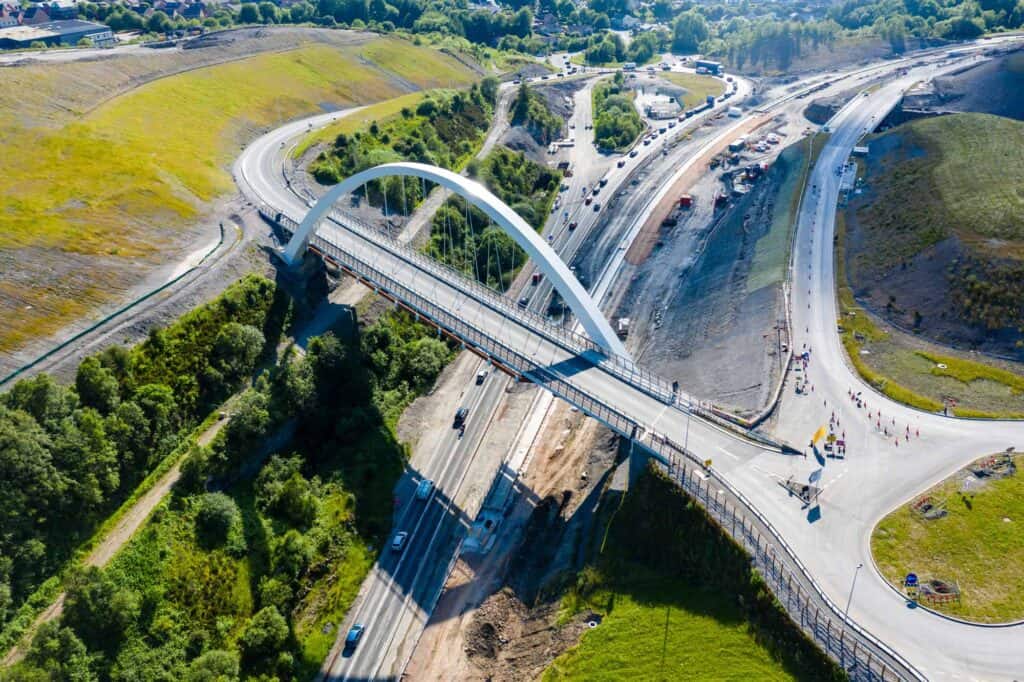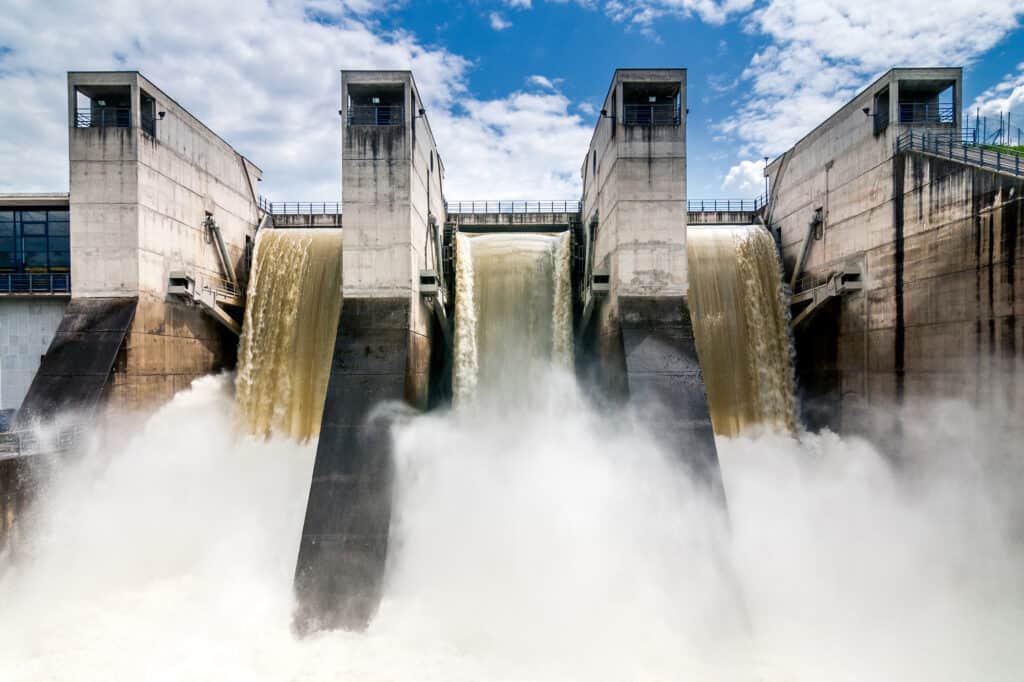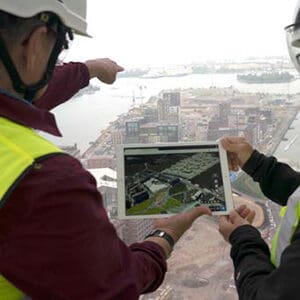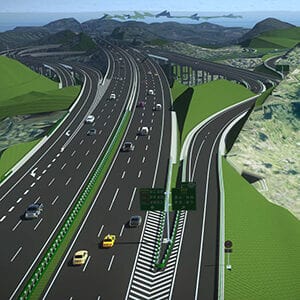CAD Modeling and Visualization
What is CAD software?
CAD software, or computer aided design and drafting software, is used to help architects, engineers, designers, and mapping professionals build models and drawings throughout design, construction, and operation of buildings, bridges, roads, factories, processing plants, rail networks, mines, substations, tunnels, water and wastewater plants, and more.
What is the best CAD software for infrastructure projects?
With proven technology, you can confidently take on any design, construction, or operations project. No matter what design information you are working with or what kind of deliverables are required, you can rely on Bentley’s modeling and visualization products for the flexibility and power to get the job done on time and on budget. Bentley’s modeling and visualization products are more than just CAD applications. They provide the power and versatility for information-rich 2D and 3D designs of all types of infrastructure projects.
Discover which ones are best for your project. Here are some of our most trusted, best-selling CAD software.
Model, document, access, and view architectural, engineering, mapping, construction, and operations design information with the power and flexibility you need for any size project.
Visualize your models with cinematic quality rendering and animation by integrating life-like digital nature into your simulated infrastructure designs from CAD/BIM files.
Full collection of spatial analysis and presentation capabilities using and extracting 2D and 3D reality data.
Extract data and integrate point clouds, reality meshes, scalable terrain models, and raster imagery into your workflows.
Design, analyze, document, and visualize buildings with software made for architects and engineers. Includes OpenBuildings Speedikon, a specialized software for German and European markets.
Create accurate 3D models for structural steel, metal work, and reinforced concrete structures.
Comprehensive detailed design and documentation for roadway projects including surveying, drainage, subsurface utilities, and visualization in on application.
How to choose CAD Software
How do CAD design software and 3D design software from Bentley and other vendors compare? How can you tell which products are best for the type of design projects you will be working on? There are different types of computer aided design software or combinations of 3D CAD software that will help you deliver different types of projects—from airports to wastewater treatment plants.
Software qualities that most professionals look for in CAD software
CAD and BIM
Purpose-built for both CAD and BIM workflows.
Versatile
Confidently tackle any design, construction, or operations project.
Interoperable
Work seamlessly across a variety of file formats and third-party applications.
Since every industry requires a different mix of drafting and 3D CAD software for modeling, documenting, and delivering new and updated infrastructure assets, we have assembled helpful software lists broken down by industry and profession to help guide you.
- Building
-
Which building professions use CAD Software?
Bentley 3D CAD and 2D CAD software is used by engineers, architects, owners, and construction professionals across every discipline. See which CAD programs are built for each building discipline.
Architects
Design with 2D and 3D CAD and BIM applications to document buildings of any type or scale and efficiently coordinate with all engineering trades.
structural engineers
Model, analyze, detail, and document steel, concrete, and timber structures of all types with leading 3D design software.
mechanical engineers
Design complex MEP systems. Model fully parametric air-handling, piping, and plumbing systems with advanced CAD and BIM software.
electrical engineers
Design lighting, power, fire-detection, and other electrical subsystems with both 2D and 3D CAD workflows and coordinate efficiently with other trades.
draftsman
Design with 2D and 3D CAD and BIM applications to document buildings of any type or scale and efficiently coordinate with all engineering trades.
- Civil Engineering
-
Which civil engineering professions use CAD Software?
CAD design software and civil engineering BIM software is used by civil engineers throughout design and construction of sites, roads, rail, bridges, and other civil works projects. See which CAD programs and 3D modeling software applications are made for civil engineering.
Civil Engineer for road design
Design with 2D and 3D CAD and BIM applications to document buildings of any type or scale and efficiently coordinate with all engineering trades.
Civil engineer for site design
Model, analyze, detail, and document site designs more efficiently with superior 3D modeling software and CAD design capabilities.
geotechnical engineer
Document and produce subsurface reports for virtually any type of geotechnical or geoenvironmental project.
Rail Track Engineer
Use 3D modeling software and software to produce CAD drawings for rail lines, tunnels, and bridges from concept through construction.
Structural engineer
Model, analyze, detail, and document steel and concrete civil engineering structures of all types with leading CAD design, modeling, and analysis software.
Bridge Engineer
Produce models, analyze bridge designs, and deliver 2D documentation for any bridge project.
Hydraulic Modeler
Design and analyze any water, storm, sewer or detention and retention structures.Surveyor
Create maps, terrain models, and produce contours and survey deliverables. - Process/Industrial Engineering
-
Which process/industrial engineering professions use CAD Software?
Process engineering professionals involved in petrochemical refining, food processing, pharmaceutical, chemical, and nuclear projects need computer-aided design software, including 3D modeling software, and software to produce CAD drawings to deliver high-quality projects.
Instrument and Controls Engineer
Model and document electrical systems, including 2D layouts, 3D equipment models and reports, cable system layout, routing, and material estimating.
Mechanical/Piping Engineer
Model, analyze, detail, and document designs more efficiently with superior 3D modeling software and CAD design capabilities.
Process engineer
Use 2D and 3D CAD software and BIM applications to deliver conceptual plant designs to optimize construction, maintenance, and operability.
- Utilities
-
Which utilities professions use CAD Software?
Professionals involved in the design, construction, and operations of gas, electric, communications, water and wastewater networks, and plants use a variety of CAD programs and technical drawing software as well as BIM and GIS applications.
Communications Network Engineer
Model and document communication networks and systems, including 2D layouts, 3D equipment models and reports.
Substation Engineer
Create 3D models and drawings of substation physical layout, drawings, electrical schematics, reports, and construction deliverables.
Gas/Electric Network engineer
Design, document, and manage models and drawings of electrical networks.
Hydraulic modeler
Design and analyze any water, storm, sewer or detention and retention structures.
Which building professions use CAD Software?
Bentley 3D CAD and 2D CAD software is used by engineers, architects, owners, and construction professionals across every discipline. See which CAD programs are built for each building discipline.

Architects
Design with 2D and 3D CAD and BIM applications to document buildings of any type or scale and efficiently coordinate with all engineering trades.
structural engineers
Model, analyze, detail, and document steel, concrete, and timber structures of all types with leading 3D design software.
mechanical engineers
Design complex MEP systems. Model fully parametric air-handling, piping, and plumbing systems with advanced CAD and BIM software.
electrical engineers
Design lighting, power, fire-detection, and other electrical subsystems with both 2D and 3D CAD workflows and coordinate efficiently with other trades.
draftsman
Design with 2D and 3D CAD and BIM applications to document buildings of any type or scale and efficiently coordinate with all engineering trades.
Which civil engineering professions use CAD Software?
CAD design software and civil engineering BIM software is used by civil engineers throughout design and construction of sites, roads, rail, bridges, and other civil works projects. See which CAD programs and 3D modeling software applications are made for civil engineering.

Civil Engineer for road design
Design with 2D and 3D CAD and BIM applications to document buildings of any type or scale and efficiently coordinate with all engineering trades.
Civil engineer for site design
Model, analyze, detail, and document site designs more efficiently with superior 3D modeling software and CAD design capabilities.
geotechnical engineer
Document and produce subsurface reports for virtually any type of geotechnical or geoenvironmental project.
Rail Track Engineer
Use 3D modeling software and software to produce CAD drawings for rail lines, tunnels, and bridges from concept through construction.
Structural engineer
Model, analyze, detail, and document steel and concrete civil engineering structures of all types with leading CAD design, modeling, and analysis software.
Bridge Engineer
Produce models, analyze bridge designs, and deliver 2D documentation for any bridge project.
Hydraulic Modeler
Surveyor
Which process/industrial engineering professions use CAD Software?
Process engineering professionals involved in petrochemical refining, food processing, pharmaceutical, chemical, and nuclear projects need computer-aided design software, including 3D modeling software, and software to produce CAD drawings to deliver high-quality projects.

Instrument and Controls Engineer
Model and document electrical systems, including 2D layouts, 3D equipment models and reports, cable system layout, routing, and material estimating.
Mechanical/Piping Engineer
Model, analyze, detail, and document designs more efficiently with superior 3D modeling software and CAD design capabilities.
Process engineer
Use 2D and 3D CAD software and BIM applications to deliver conceptual plant designs to optimize construction, maintenance, and operability.
Which utilities professions use CAD Software?
Professionals involved in the design, construction, and operations of gas, electric, communications, water and wastewater networks, and plants use a variety of CAD programs and technical drawing software as well as BIM and GIS applications.

Communications Network Engineer
Model and document communication networks and systems, including 2D layouts, 3D equipment models and reports.
Substation Engineer
Create 3D models and drawings of substation physical layout, drawings, electrical schematics, reports, and construction deliverables.
Gas/Electric Network engineer
Design, document, and manage models and drawings of electrical networks.
Hydraulic modeler
CAD Software Resources and Tutorials
Find out more about MicroStation and Bentley’s other CAD software applications with these resources, educational programs, and tutorials.
CAD software training
Learn with courses
There are thousands of videos and courses available to learn all about using Bentley’s CAD software, including MicroStation and more.
Academic programs
For Students and Educators
If you are an educator or a student, learn more about accessing the software and see what you need to teach or learn Bentley CAD software best practices.
CAD Software Videos
Bentley CAD Software on YouTube
Watch videos on WHAT MicroStation does and HOW it works to get familiar with how this 3D CAD and drawing software can help you deliver your next project.
featured user stories
City of Helsinki
Citywide Digital Twin
By using Bentley applications, stakeholders and citizens were brought together in an open digital city platform.
Sichuan Road and Bridge
Smart Highways
Bentley’s digital applications helped the team save CNY 17.5 million in costs and reduced the construction time frame with digital workflows.

DANIELA APREA
BIM Manager, Italferr S.p.A.
ITALFERR
“BIM methodology on this project follows the digital twin approach. The enhanced visibility and insight allowed us to change how we deal with the design and management of infrastructure work.”





